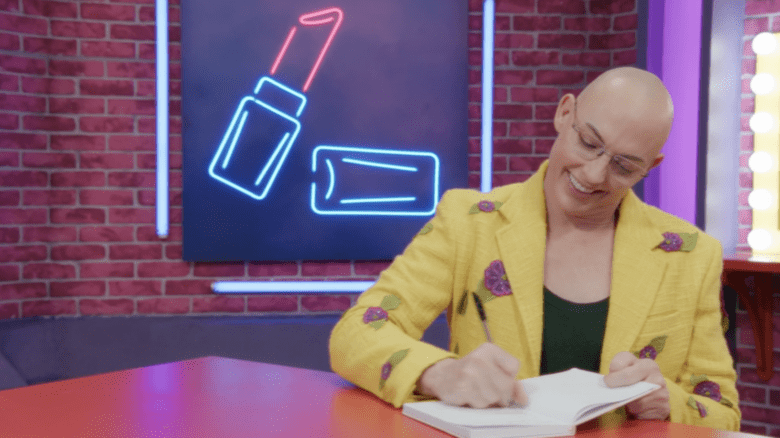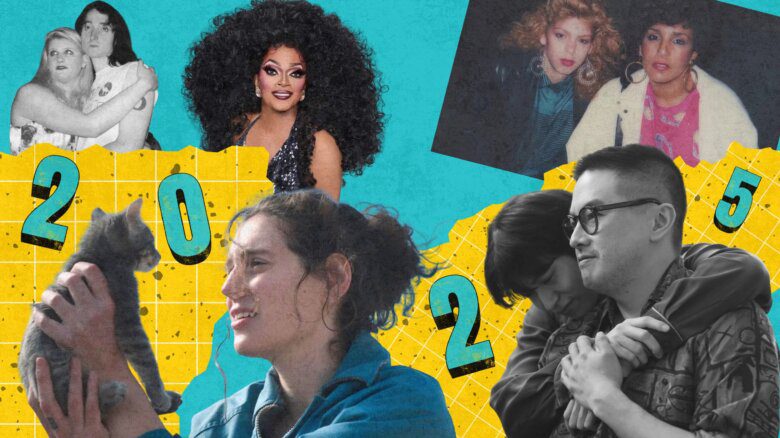I expected Roland Emmerich’s Stonewall to be Independence Day with drag queens, but it felt like a big screen remake of the 1983 music video for Pat Benatar’s “Love Is A Battlefield” with a gay male lead and hustlers instead of hookers.
In the canon of schlockmeister Emmerich’s oeuvre, Stonewall ranks even below 1998’s Godzilla, and shares with that failed creature feature a complete disregard for its source material. Even the film’s title is deceiving. The Stonewall Inn, and the four days of rioting that broke out after the bar was raided on June 28, 1969, are incidental to this coming of age story about Danny Winters (Jeremy Irvine), a gay youth who runs away to New York City to escape the prison of his rural existence.
As expected, Emmerich gives short shrift to the real heroes of the Stonewall riots. The dykes, drags queens and trans folk who ignited the flame that sparked the gay liberation movement are little more than extras in this by-the-numbers tale. While the film shows how they are singled out for police abuse while straight-presenting men go free, this is not their story, and they are treated as minor characters who are at once forgettable and forgotten.
Stonewall is astonishing in its awfulness. Pulitzer-nominated screenwriter Jon Robin Baitz delivers a clichéd script that serves up trope after weary trope.
After he is caught blowing his high-school team’s quarterback, Danny is mocked by his peers and thrown out by his football coach father. He runs away and takes up with a group of street kids, including Ray (aka Ramona) — an androgynous, Puerto Rican hustler played by Jonny Beauchamp — who is instantly smitten with the white-bread country boy. But Danny falls for Trevor (Jonathan Rhys Meyer), an older, white Mattachine Society activist who seduces him by playing Procol Harum’s “A Whiter Shade Of Pale” on the Stonewall’s jukebox and inviting him to a slow dance. As luck (and contrivance) would have it, Danny stumbles into the Stonewall later in the film to hear the same song playing, and to find his paramour pulling the same moves on a fresher recruit to the toaster oven set.
The street kids who befriend Danny are paper-thin placeholders for various perspectives and communities within the queer spectrum, and serve only to advance the plot. They’re the most impeccably dressed, perfectly accessorized and fabulously coiffed homeless hustlers ever, but their street fashion and ethnicity offer limited allure to their clientele. In a depressing echo of the racism and masculinism that pervade hook-up apps like Grindr, the lily-white and preppy Danny is at the top of the food chain in terms of desirability. While Danny hustles as a last recourse on his way to Columbia University (a scholarship he has earned for no apparent reason drives an unnecessary subplot), his plucky homeless confidants are too damaged to do better.
Freaks, fats, femmes, dykes, trans folk and persons of colour are implicitly presented as having lesser value than straight-acting, gender-conforming white males. Danny’s choices further reinforce these prejudices: he sides with his diverse friends, but his lovers of choice are buff white men.
Appearances are everything in this shallow story, and this is why Stonewall’s look is one of its biggest disappointments. Emmerich’s Christopher Street looks like Disneyland. His filmic take on 1960s New York feels like a set and is often bathed in the golden light of the sunset hour. While NYC may be the metaphoric Emerald City at the end of Danny’s Yellow Brick Road, it shouldn’t look like a Technicolor fantasyland. The grit and the grime that made the real thing interesting are either absent or stylized. (Again, if you want authenticity, check out “Love Is A Battlefield.”)
Emmerich treats the four nights of violence that kick-started the queer rights movement as an afterthought, reducing them to a single night of poorly choreographed violence.
To be fair, the riot does begin with a rough-handled butch lesbian escaping a police cruiser and urging the crowd to revolt, but things get silly after that. At one point in the fracas, the main cast jumps atop the burnt-out husk of a car and strikes a dramatic pose that evokes Madonna’s backup dancers or the Teenage Mutant Ninja Turtles, depending on your cultural touchstones.
As feared, the first brick is thrown by Danny and not by Marsha P Johnson (who is a minor and mostly absent character), and this is after a barrage of clunky exposition that forces Danny to choose between the assimilationist Trevor and the more radical street kids.
Also problematic is the portrayal of Deputy Seymour Pine (Matt Craven) as a crusader who wants to prevent the exploitation of gays by organized crime, specifically the Inn’s mobster proprietor Ed Murphy (Ron Perlman). A confusing subplot paints the homosexual Murphy as a potential blackmailer and accessory to the murder of one or more hustlers. As a result, Pine’s justification for that final, fateful raid makes him a straight saviour rescuing the filthy queers from themselves.
The paltry sex in Stonewall consists mostly of older white men (including a cross-dressing J Edgar Hoover analogue) going down on Danny. These oral encounters are blandly depicted by cutting away from close-ups of hands tugging at the waistbands of tighty-whities.
Stonewall is so bad that it doesn’t even rise to the level of a guilty pleasure. If you must see it, get wasted and bring your snarkiest friends — your inebriation and their pithy remarks will provide far more entertainment than the film.
There is this silver lining: Stonewall is a dreadful film that will soon be forgotten, leaving room for future filmmakers to bring the story of the uprising to the screen in ways that will touch, entertain and educate audiences.


 Why you can trust Xtra
Why you can trust Xtra


